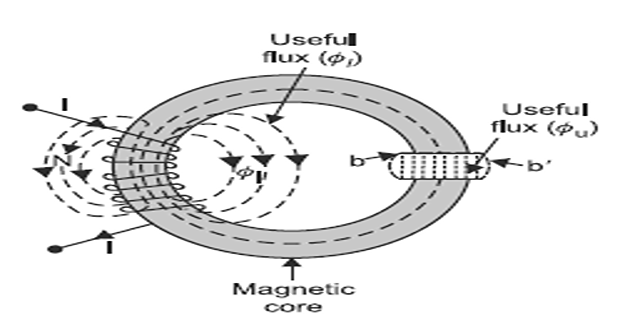Demonstrative Video
Leakage Flux
\(\phi\) which does not follow the intended path in a magnetic circuit is called leakage flux

When some \(I\) is passed through a solenoid magnetic flux is produced
Most \(\phi\) is set-up in the magnetic core and passes through the air gap (an intended path) known as useful flux \(\phi_u\).
However, some \(\phi\) is just set-up around the coil and is not utilised for any work. This flux is called leakage flux \(\phi_l\)
- \[\phi=\phi_u+\phi_l\]Total flux produced by the solenoid
- \[\text { Leakage co-efficient, } \lambda=\frac{\phi}{\phi_{u}}\]Leakage co-efficient or leakage factor:
Fringing:
\(\phi_u\) when sets-up in the air gap, it tends to bulge outwards ( b and b’) since the magnetic lines set-up in the same direction repel each other.
This increases the effective area in the air gap and decreases \(B\)
The fringing is directly proportional to the length of the air gap.